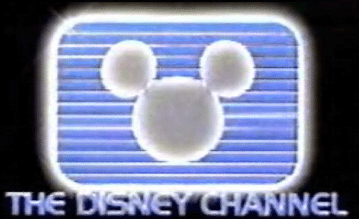When my father died in 1983, my family’s economic status shifted dramatically. My mother had been a stay-at-home mother; apparently, that was the deal my parents had agreed to when they got married. However, that meant that our breadwinner was gone. My younger sister was two at the time, and my mom hadn’t worked since the early ‘70s. There was no way she was going to find a job right away that paid our bills and covered childcare for someone that age. We survived until the time my sister started school on my dad’s Social Security and VA benefits, the rent from a mother-in-law house on our property, and—I’m pretty sure—the largesse of my grandparents.
Not quite ten weeks later, The Disney Channel debuted. At the time, it was a pay station. In today’s money, it was roughly $20 a month. Mom also got Showtime, for roughly the same, for more adult programming. This was Disney as I remember it. I know Mom made the decision after seeing a display about the channel at our annual Disneyland trip—this would’ve been the first one without Dad and difficult for all of us, and the financing was something that would have been a struggle for Mom as well. But, yes, she decided that we needed to have that bonus, and we needed the extra fun of cable.
About ten years later, the decision would have been very different. Leave aside the fact that cable was ubiquitous by that point and that it would’ve been something we would have had with Dad in the house. (Probably Dad would’ve gotten us The Disney Channel, had he lived that not-quite-three-months; we had a VCR by the time he died, too, and Dad was a huge Disney fan.) The issue is that, starting in 1990, cable providers stopped categorizing Disney as a pay station and started including it on their basic packages. By 1997, the channel was exclusively basic cable.
Strangely, the difference seems to have been more expensive programming, if you want my opinion. When I was a kid, all they had to do was haul things out of the vault. There was no such thing as a Disney Channel star, unless you counted Tommy Kirk or Hayley Mills. It’s definitely true that my own early fondness for things like Zorro and Candleshoe come from that era. It’s also true that the first made-for-Disney Channel movie was in October of that year, with Tiger Town. (Not on Disney+, and I’ll have to try tracking down a copy at some point.) However, most of the programming at the time was out of the Vault.
It’s a unique situation. To my knowledge, no other channel has undergone this transition. Nickelodeon was always basic cable. HBO has always been premium. If you know of another example, feel free to let me know. However, I’m pretty sure Disney is the only one to make the trade. Further, I’m pretty sure the main reason they made the trade was intended to make the entire channel an ad for further Disney products. The parks, the movies, the merchandise—Disney made a promise that they wouldn’t run “typical” ads in the way that Nickelodeon did, but they didn’t have to. The last time I went to a Disney park, it was full of Phineas and Ferb merchandise, after all.
It is its status as an advertisement that drove the new content, in my opinion. It’s hard to sell DVDs of Alice in Wonderland if you see Alice in Wonderland on the channel on a regular basis. There’s also a belief, true or false, that people don’t want to watch the older programming. They don’t want to watch The Wonderful World of Disney if they can watch the same episode of That’s So Raven four times a day. And that’s not an exaggeration; the programming repeated once they phased out Vault Disney.
Possibly Disney has a lot more viewers now than it did; it’s definitely true that those years of late ‘90s/early ‘00s Disney Channel programming is a lot more available on Disney+ than the things I grew up watching on the channel as a kid. Disney+ is pretty sure I’ve got nostalgia for that era, not knowing that my nostalgia comes from sitting up until 4 AM watching things like Lt. Robin Crusoe, USN. (Do not seek that one out.) However, I fully insist that it’s in part because Disney has forgotten how to sell what it has. Tiger Town surely has a built-in audience of baseball fans, but it isn’t on the service.
The basic cable era of The Disney Channel did mean that we weren’t likely to see Dumbo’s Circus again, for which I’m grateful. But cramming in videos for Disney parks and Disney movies meant we didn’t get DTV anymore, which is a great shame. Not playing the movies also meant that there was no longer room in the schedule for the odd cartoon, or indeed for DTV. Programs got shorter, with planned commercial breaks to fill with only ads for other Disney stuff, including quite a lot of ads for other made-for-Disney Channel programming. Much of what made The Disney Channel distinct went away, when it became Disney Channel.
Help me plan an upcoming Disneyland vacation for my family by contributing to my Patreon or Ko-fi!


